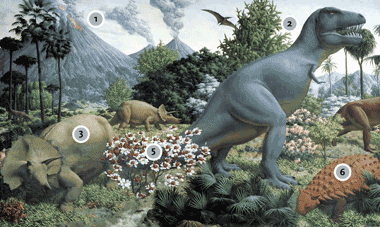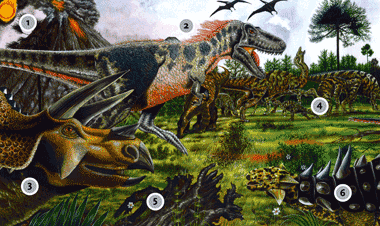LFH Overview
Interdisciplinary Reseach
Learning from other Disciplines like Paleontology
How do we view historical projects? What do we need to do to gain insights from these projects?
|
Conventional wisdom around 30 years ago viewed dinosaurs as slow lumbering creatures. The name terrible-lizard inferred large, cold blooded reptiles that lived in a hot tropical climate. This was a long held view initiated by Richard Owen 130 years earlier. Note in the Yale University Zallinger mural (circa 1940) the slow moving T-Rex with tail trailing along the ground, or the Triceratops with splayed lizard legs. |
 |
| Fast forward to today and conventional wisdom views dinosaurs as agile, warm blooded creatures, closer to birds than reptiles, that lived in the extremes of hot and cold climates (deserts and polar regions). Why this shift in views and thinking? What has changed in the last 30 years? You could argue the influx of new technologies has had an impact. For example, X-ray computed tomography (CTs), computer generated imagery that provides biomechanical simulations, comparative anatomy with modern animals in similar ecological niches, and forensic science. However, foremost the biggest change was reviewing the known evidence more carefully, objectively and logically. Paleontology has taken a path over the last 30 years which absorbs and borrows approaches from other disciplines. |  |
|
Today's view of historical project management is inaccurate, biased, and unrealistic. It has been badly distorted by fiction, the media, film and pop culture of the 20th century. For example, conventional widom is that the Giza Pyramid was built by thousands of slaves who were worked unmercilessly to death. Based on recent archaeological evidence this view needs to be updated in a similar way the view of dinosaurs has been in the last 30 years. We need to start to reinterpret historical project management, like the paleontologists and look to field archeologists, climate scientists, forensists, so that we can connect or equate it to modern project management, and see it as a natural evolution. |
 |

